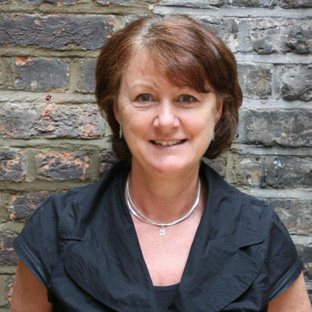Recently, I was invited by Blair Glencorse, a Fellow based here in Washington DC, to a Pitch Salon. What, I wondered, is a Pitch Salon? Turns out it’s a networking event that’s a cross between speed networking and TED Talks. It’s a lot of fun and a powerful way to expand personal horizons, share information and connections, and inspire new ways of thinking.
According to Wikipedia, a salon is a gathering of people under the roof of an inspiring host, held partly to amuse one another and partly to refine taste and increase their knowledge of the participants through conversation. Salons, commonly associated with French literary and philosophical movements of the 17th and 18th centuries, often consciously followed Horace's definition of the aims of poetry, "either to please or to educate", and played an important role in the Enlightenment.
It's a unique format we thought would work well to generate some really exciting, creative thinking and collaborations. To make it work, we want just the right small group of people in the room
- Blair Glencorse, FRSA
So this 21st Century Pitch Salon had all the ingredients: Blair and his co-organizers, Alex Toma and Matt Rojansky, were indeed inspiring hosts; they brought together a carefully selected group of about 30 people under the roof of the Carnegie Endowment for International Peace. Each person was invited to participate because they had something unique and exciting to offer and because they wanted to make the world a better place. We were ready to be pleased and educated.
The event began with a rapid-fire series of five very different presentations: the need for a US grand strategy of sustainability to address profound economic and political problems; advocacy for civilian victims of conflict around the world; the case for decentralized investment and distributed control; the internet and democracy; and the psychology and neuroscience of magic in fostering 21st Century skills. Each was allowed no more than five minutes, used no props, power points or specialized jargon, and the speakers followed each other with no break for Q&A. There was something about the intensity of this approach that was very compelling. I was transported into entirely new worlds and gained fresh insights into more familiar territory, and as each speaker wrapped up we were left wanting to know more.
 The second part of the evening was a free for all, a social hour giving us the chance to mingle. We had questions for the pitch makers and for each other; introductions, information and business cards were exchanged. It seemed imperative to meet everyone in the room before the hour was up.
The second part of the evening was a free for all, a social hour giving us the chance to mingle. We had questions for the pitch makers and for each other; introductions, information and business cards were exchanged. It seemed imperative to meet everyone in the room before the hour was up.
This format seems like it would work really well in a number of settings. It might be interesting to try it in some of the Fellows’ networks, with partner networks, as a workshop for students, or in mediation or therapeutic settings. Who would like to give it a try?
Lynn Broadbent is Fellowship Director for US networks – follow her @LynnUSA
Related articles
-
Three reflections on RSA Meetups: Human connectivity and a catalyst for change
Dr Dee Gray, Alan Henry and Pam Luckock FRSAs
This blog is written as three reflections, inspired by recent on RSA regional ‘meet ups’ in north Wales. It is written by RSA Fellows Dr Dee Gray, Alan Henry and Pam Luckock.
-
"Thank you for teaching me how to look"
Sally Sheniman FRSA
Over three months from end of January to beginning of April in 2019, Artists in Residence at C2C Social Action worked with vulnerable women in Northampton, teaching art skills and bolstering confidence.
-
The Democratisation of Planning
Michael Ocock
Michael Ocock advocates for systems thinking and a change to the way we think about public engagement.


Be the first to write a comment
Comments
Please login to post a comment or reply
Don't have an account? Click here to register.